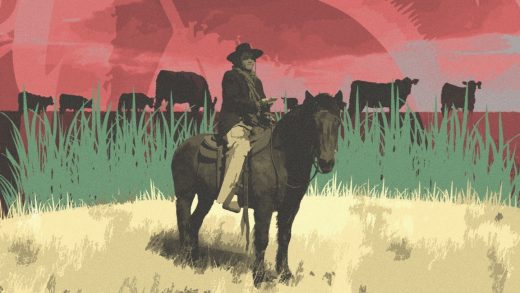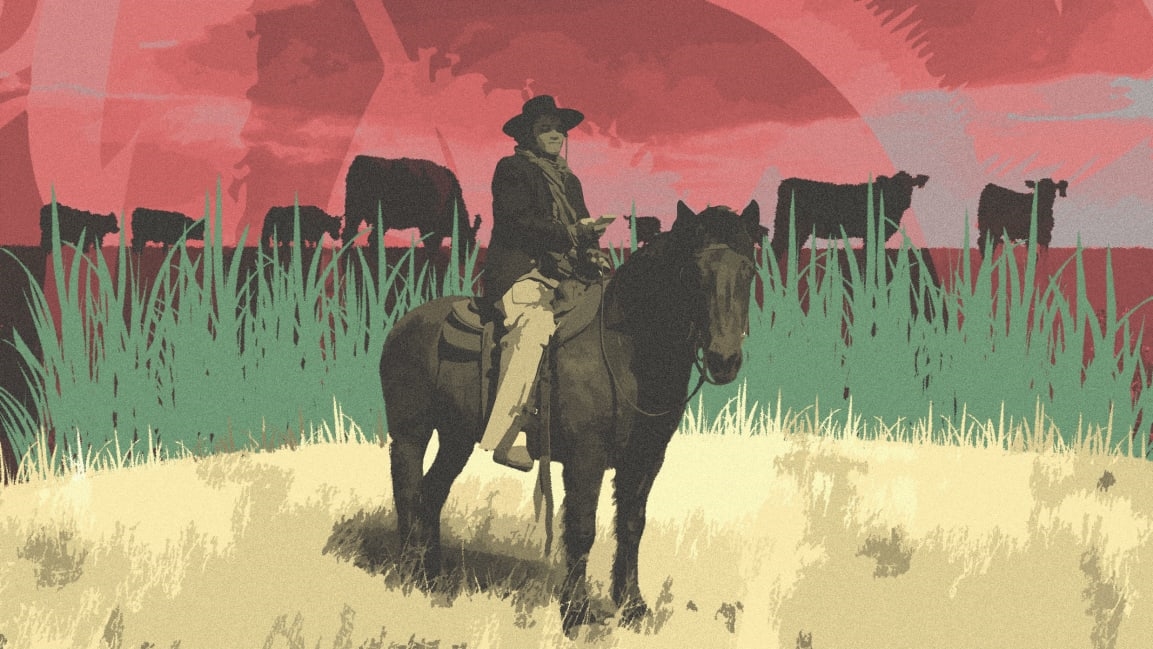The Green New Deal wants farmers to restore the land, not keep wrecking it
By the time California rancher Doniga Markegard picks up the phone around lunchtime, she has already moved the chickens, fed the chickens, fed the pigs, cared for a new litter of 11 piglets, moved the sheep, tended to the horses, milked the cow, and completed a business advising session about the future of her family’s 10,000-acre operation. Overall, a pretty typical Monday.
“We’re good at working with the land and working with the animals, but then all of a sudden you have to add marketing and sales and inventory management,” says Markegard. Based 50 miles south of San Francisco in Half Moon Bay, Markegard and her family produce grass-fed beef and lamb and pastured pork and chicken for customers in the Bay Area. If they operated in a more traditional way, they would specialize in a single product and plug neatly into the industrial agriculture system. Instead, in order to break even, they have to run the equivalent of a consumer-facing small business with a farm attached.
“We’d love to just be out on the land with the livestock, doing what we do, but that’s not practical when you really want to be fully regenerative,” she says.
Regenerative agriculture might sound at first like a subtle variation on organic. But if the term “organic” highlights what’s absent—no chemical fertilizers, no pesticides—”regenerative” goes a step further, advocating for practices like adaptive multi-paddock grazing, in which ruminants like cows and sheep are slowly rotated across a property, so they graze on and fertilize one section of the farm at a time while allowing the rest to naturally regrow and replenish. Methods like this require more hands-on planning involvement from the farmers, but they’ve been found to restore soil health, capture carbon, and help ranches thrive over the long term.
Markegard defines regenerative as “producing more life than you take.” The essential practices are keeping the soil covered with a diverse set of plant species, limiting how much the soil is disturbed by aggressive practices like overplowing, and using livestock to both “kick-start and enhance” the carbon cycle by naturally controlling crops and adding nutrient-rich manure back to the soil. Approaches like that of the Markegard Family Farm are still a tiny niche in the broader agricultural landscape. But interest in regenerative methods has been growing, thanks in large part to evidence suggesting that such practices can cheaply sequester carbon in the soil, while simultaneously solving challenges like erosion and water retention.
The tricky thing, on the surface at least, is that regenerative agriculture depends on livestock—particularly cattle—to work. As awareness around the climate crisis has grown, fingers often point to the production and consumption of meat as a key cause. But the problem is the methods used to mass-produce meat products, not the animals themselves. Integrated correctly into farming operations—as they were before the advent of industrial agriculture, and as regenerative ranchers are trying to do now—livestock like cattle are crucial to keeping land sustainable and productive.
When Representative Alexandria Ocasio-Cortez (D-NY) and Senator Ed Markey (D-MA) unveiled the Green New Deal in February, participants in the regenerative agriculture movement received further confirmation that they were on the right track. The Green New Deal—a broad resolution designed to accelerate decarbonization of the economy while supporting job growth and community health—is encouraging to regenerative ranchers like Markegard. The legislation’s section on agriculture focuses on supporting family farms and ranches, increasing soil health, and promoting equal access to healthy food. “Transitioning to sustainable, locally focused, ecologically responsible agriculture that drastically reduces greenhouse gases will be a crucial part of implementing a Green New Deal,” Saikat Chakrabarti, chief of staff for Ocasio-Cortez, said in Civil Eats in February. According to the Environmental Protection Agency (EPA), agriculture accounts for 9% of U.S. greenhouse gas emissions. Tackling the climate crisis will require radically reshaping the agriculture industry in the United States. Regenerative farming could point the way toward how we could do so, and restore the land we live on in the process.
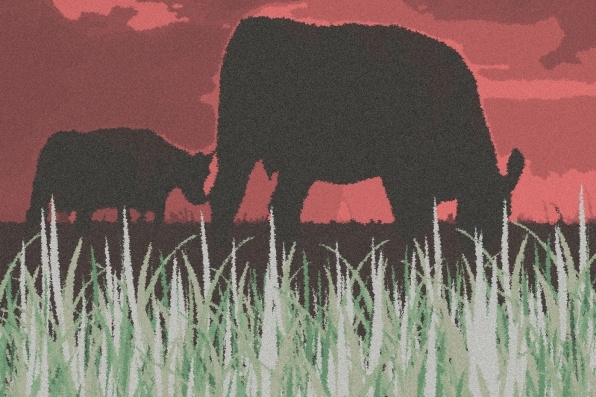
The need for an agricultural overhaul
As a system, mainstream agriculture in the U.S. today operates in a way that is out of sync with both the long-term sustainability of the land and the well-being of the people it is designed to feed. Although the majority of farms are independent, family-owned small businesses, their incentives are profoundly shaped by federal subsidies and corporate “agribusiness” behemoths. For a company like Monsanto or ADM, “yield” is the goal, driving farmers to specialize in a single product, or monoculture. To maximize yield, industrial agriculture operations often lean on synthetic pesticides and fertilizers to boost production. The end result: man-made problems like declining soil health, contaminated landscapes, and a national surplus of mass-produced meat that weighs in at around 2.5 billion pounds.
“We no longer value food. We produce twice the calories that are needed,” says Kevin D. Walker, author of The Grand Food Bargain and the Mindless Drive for More and a professor at Michigan State University. “In other words, we don’t see food in terms of our connection to life and nature and our surroundings. We see food as simple convenience and comfort. It’s a transaction that we just carry out hundreds of times a year, and that’s it.”
At the heart of this disconnected transaction is the agriculture industry. This sector of the economy is responsible not only for a sizeable portion of the country’s carbon emissions, but also for eating through a good deal of natural and financial resources. To support this system of monoculture crop production and factory-farmed meat, the U.S. government allocates around $13 billion in subsidies each year through the Farm Bill to operations that produce just six crops: corn, wheat, soybeans, cotton, rice, and peanuts. As much as 70% of these basic crops goes toward feed for industrial-scale livestock operations. Our modern mainstays are also incorporated into cheap, processed food in the U.S. that’s nutritionally failing the people who consume it.
In the broad framework for the Green New Deal, Ocasio-Cortez and Markey issue a call to reform this system. The resolution aims to precipitate a shift back toward quality in the agriculture industry, which would mean abandoning mainstream monoculture in favor of farms that look more like Markegard’s: diverse operations that produce a variety of crops and integrate all aspects of agriculture in a single, productive farm. Along with this shift, regenerative ranching could create jobs, as it requires more manual labor than its industrial counterparts. If the government can work with ranchers to figure out how to meet their financial and technical needs, meeting that need would track with the Green New Deal’s goal of creating living-wage jobs while decarbonizing the economy.
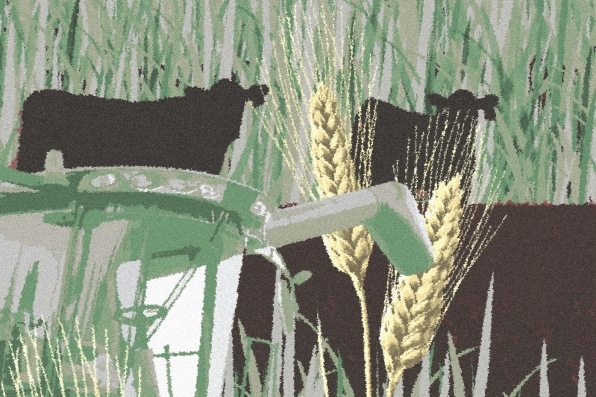
Sustainable agriculture? There’s tech for that
If you were looking for one person to embody the Green New Deal’s attempt to link family farms, soil health, and food systems, it could easily be Christine Su. She arrived at Stanford University 15 years ago after a childhood in California and Asia eating home-cooked Taiwanese meals. Before long, her body started rejecting the processed food available in the campus cafeteria. “My lips would swell up, and I would get rashes all over my upper body,” she says. After an elimination diet that made her temporarily vegan, she began visiting farmers’ markets and trying to find foods that made her feel good.
After graduating, Su joined McKinsey & Company and worked on projects involving food brands. But she wanted to get out of an office and closer to the land. Through a series of volunteer projects and internships, she milked cows at a dairy farm in Japan and interviewed shepherds in New Zealand. She also returned to Stanford for an MBA and a master’s degree in land use and agriculture. “I didn’t know the term ‘soil health’ when I first started,” she says.
She quickly learned. By 2014, Su had become convinced that regenerative practices had the potential to transform both the ranching industry and the planet. She also saw a link between the rich microbiome typical of healthy soil on regenerative farms and the conversation around probiotics and gut health, which she had explored through her own diet. “Current industrialized agriculture kills all this microbial life. It’s why soil is blowing away in the Midwest,” she says. “You can tell when you walk on a prairie and it’s full of life, versus driving by fields and no bugs hit the windshield.” Healthy, nutrient-rich soil is one of the most effective carbon sequestration tools on the planet, and much more effective at storing water than dry land. But soil that’s been degraded by decades of intensive monoculture and pesticide use lacks the nutrients that effectively bind carbon in the ground. Regenerative ranching helps replenish those nutrients. If livestock are well managed and rotated, they can process nutrients from the crops they chew, and release them in the form of manure back into the soil. This method of land use, in which everything works as a cyclical system, can act as a direct antidote to industrial agriculture.
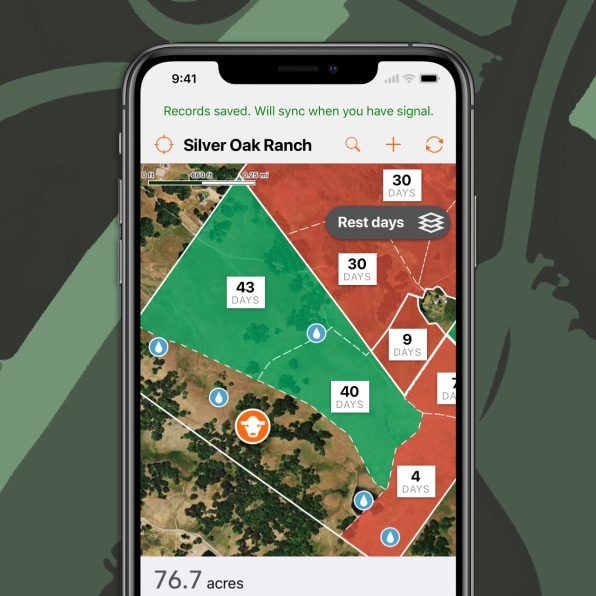
Su made this connection by learning from a number of “renegade farmers” who practiced regenerative ranching. And she realized that her business experience and “data geek” background could be a boon for ranchers struggling to make regenerative practices work within the constraints of their land and their budget. So she cofounded PastureMap, a map-based digital planning tool for managing livestock that also helps farmers evaluate the environmental performance of their land, like the amount of carbon their soil is storing.
“Regenerative agriculture can be overwhelming because it’s a set of principles that requires a change in mind-set, as well as a bunch of processes that are rooted in science,” Su says. A novice regenerative rancher has to analyze the land, subdivide pastures, rotate cattle, plant a diverse cocktail of cover crops—and that’s just the beginning. Farmers need to take a much more active role in managing their land and the animals on it, and “technology can help with the shift,” she says.
It wasn’t easy, during PastureMap’s early days, to convince ranchers to give the product a try. When Su showed up at industry conferences, she was an outsider in a sea of cowboy hats (she estimates she met 1,500 ranchers in person while doing product development). But for the small set of ranchers who had been contemplating a switch to regenerative practices, whether out of necessity or out of principle, PastureMap clicked immediately. Kansas rancher Brian Alexander, for example, heard about PastureMap on Facebook and that same day drove over four hours to Wichita to buy an iPad in order to use the software. Today, the company has $3 million in funding and 10,000 customers in 40 countries. Markegard, who became a customer in 2014, has used PastureMap to prove out that her ranch is sequestering half a ton of carbon per acre per year.
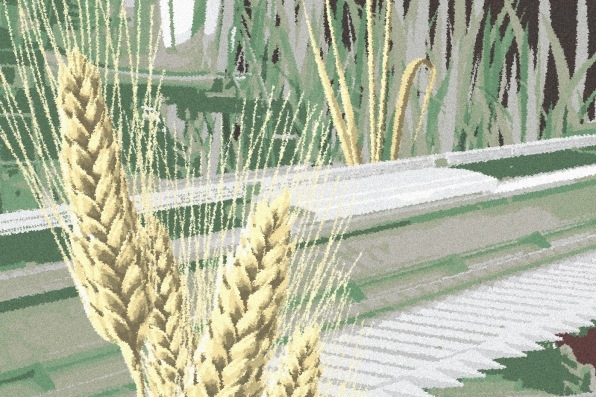
Barriers to a better system
But if an agriculture system modeled after the regenerative movement is the goal—and Ocasio-Cortez has cited it as an aspirational model for the industry—it will take smart policies and a profound shift in market incentives to reach it. Right now, for instance, labor costs can make regenerative ranching prohibitively expensive, particularly if the added costs are not offset by the savings associated with avoiding chemical fertilizers and pesticides. There are quirks to regions and microclimates that make it tough to standardize regenerative ranching best practices. And there are upfront costs, like installing the mobile electric fencing that keeps livestock in place as they rotate across different sections of the farmland. For these reasons and others, grass-fed beef produced on regenerative ranches is typically more expensive for consumers, with prices that only the affluent can comfortably pay. Without significant reform to the way sustainable farming is supported by the government, the regenerative movement won’t be able to bring about the Green New Deal’s goal of advancing universal access to healthy food.
“We have the tools for managing productivity and biodiversity, but in an industry that already has razor-thin margins, the added work or sacrifice of managing truly for the environment is something that is only supported by the livestock industry to a point,” says Ariel Greenwood, co-owner of Grass Nomads, which practices holistic planned grazing and other regenerative techniques on behalf of ranch owners.
The support that Greenwood and other regenerative ranchers seek may coalesce as extreme weather events become more common. “American family farmers are primary stakeholders in the battle against climate change, as they’ve been withstanding increasingly devastating natural disasters, including floods, drought, wildfires, and hurricanes,” National Farmers Union senior vice president Rob Larew said in a statement at the time of the Green New Deal’s unveiling. “The impacts on not only their individual bottom lines, but also on their communities, have already been significant, and they will be exacerbated by more severe disasters.”
As extreme weather prods farmers to embrace systemic change, consumers will need to evolve as well. In particular, Americans need to dial down their annual meat consumption—on average, 250 pounds per person per year, or 130% more than recommended—in order to reduce demand and help adjust to the fact that a regenerative agriculture system will very likely produce less meat. The boom in companies like Impossible Foods and Beyond Meat that are developing plant-based alternatives to animal proteins could also help ease this transition on the consumer side (though Impossible and regenerative ranchers are not on good terms).
While these large-scale shifts will take time, leaders of the regenerative movement are encouraged by a growing number of examples demonstrating that regenerative ranching is ultimately more efficient and cost-effective, once fully up and running, because it allows for a ranch to build on and encourage nature’s own tendencies. Technology solutions like PastureMap have the potential to document those trends at scale and accelerate the transition. The key is to find a way to value the carbon that regenerative operations sequester, giving ranchers a viable path to profitability.
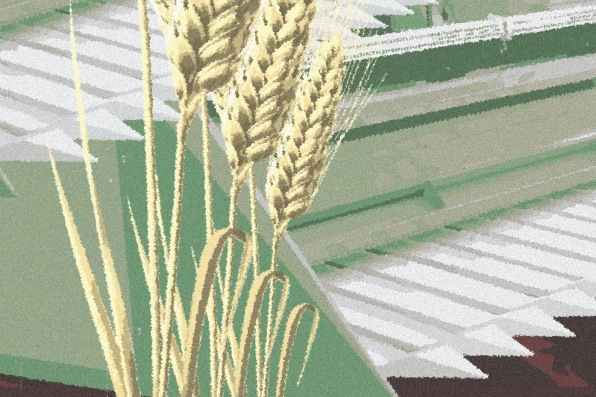
A way forward: Paying ranchers for restoring the land
Some of today’s leading regenerative practitioners adopted the practices almost by accident. Rancher Gabe Brown, who operates on 5,000 acres outside Bismarck, North Dakota, was brought to the brink of bankruptcy before he decided to experiment with a variety of cover crop “cocktails” and new ways to manage his livestock. By growing more diverse crops, like millet and daikon radish, he improved soil health while providing essential nutrients to his animals. He also found that his cattle, pigs, and chickens were effectively distributing nutrients without assistance from industrial pesticides and fertilizers, and was able to save money by winding down those purchases. After nearly two decades, the soil on Brown’s farm is now much more nutrient-dense and able to store three times more water. His memoir and guide book, Dirt to Soil: One Family’s Journey Into Regenerative Agriculture, makes the case for regenerative agriculture with both scientific data and personal conviction.
But while Brown’s journey is instructive, it would be bad policy to incite change by pushing ranchers to the brink of financial ruin. If the Green New Deal moves forward, policymakers could redirect subsidies toward regenerative ranchers. In the interim, grassroots initiatives are starting to take off; a coalition of food-world allies in the Bay Area are working together to more accurately price the value that regeneratively produced beef offers not just hungry diners, but the planet. There, a nonprofit led by former chefs, called the Perennial Farming Initiative, is collaborating with California regulators on an initiative that would pay ranchers for sequestered carbon. “People will pay $80,000 for a Tesla, but they won’t necessarily pay a dollar extra for the carbon-ranched burger,” Perennial cofounder Anthony Myint told the Los Angeles Times. For ranchers like Markegard, California’s initiative could translate into real money. She would be happy to have it: Markegard Family Farm is profitable, but pays a princely sum for Bay Area real estate. Nationwide, median on-farm household income has been negative for over two decades. Farmers will not be able to operate regeneratively unless they have the financial means to quit their off-farm jobs.
Projects like the Perennial Farming Initiative could scale up or replicate in other parts of the country under the Green New Deal. Su, through PastureMap, is trying to lay the groundwork for such a system by making it easier for regenerative farmers to track their carbon sequestration. Earlier this month, she formally launched an integration with Point Blue Conservation Science that allows PastureMap customers to monitor grazing patterns and soil health in concert. Ranchers simply take soil samples from their pastures and drop them in the mail so PastureMap partners can analyze them. “The message I want to share with ranchers is: ‘Get paid for what you’re doing, and keep good data about it,’” says Su. Over time, with enough data, she will have data and benchmarks that can power carbon-offset markets and compensate ranchers for their work. (Indigo Agriculture, another sustainable farming company, has also introduced a program to compensate farmers for the amount of carbon they’ve captured.)
There are also early signs that large companies might lend their clout to models like California’s nascent experiment. Last year, Patagonia, Dr. Bronner’s, and a host of other prominent environmentally conscious brands debuted the Regenerative Organic Certification, which will be bestowed on companies that advance both carbon capture farming and fair labor practices. Earlier this year, General Mills announced that it will work with farmers it sources from to convert their farms to regenerative operations. These types of recognition and support could one day enable farmers and agricultural companies to build out career pipelines for younger people interested in agricultural work.
As the idea of regenerative ranching gains momentum under the Green New Deal and in the agriculture industry more broadly, researchers are hard at work examining the concept. Paige Stanley, a doctoral student in environmental science, policy, and management at the University of California, Berkeley, worked with Jason Rowntree, chair of Grassfed Exchange and professor at Michigan State, on one such effort. There’s no doubt that raising beef simply for slaughter is ruinous for the environment. But integrating cattle into crop farming and soil management can have the types of carbon-neutralizing benefits the Green New Deal wants to support. “Our study last year showed that, in fact, you can have huge amounts of soil carbon sequestration and in some cases might even offset the greenhouse-gas profile of [the beef production system],” she says.
In the meantime, the movement is growing through anecdotal knowledge sharing. There are conferences and Facebook groups and apprenticeships, and grazers-for-hire who spread best practices. “We had to make a lot of mistakes,” Markegard says. “Hopefully the next generation will be able to figure this out.”
(53)

